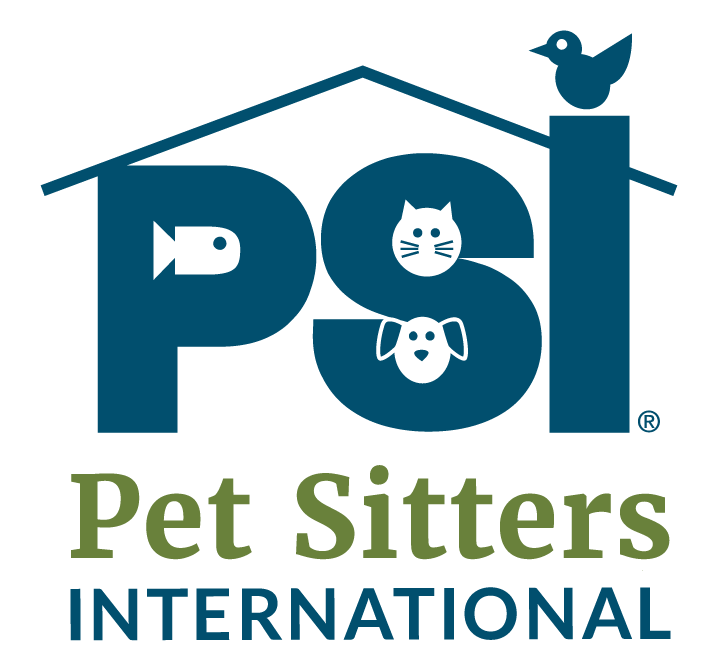How to Start a Profitable Pet-Sitting Business in 2025
May 2025 | Beth Stultz-Hairston, Pet Sitters International
Love animals? Looking for a career that gives you flexibility and purpose? Starting your own professional pet-sitting business in 2025 could be the perfect fit. With more pet parents than ever and a growing need for trustworthy, in-home pet care, there’s never been a better time to jump in.
According to the American Pet Products Association (APPA), U.S. pet industry spending reached nearly $152 billion in 2024, and it’s only expected to grow. A big chunk of that—$13 billion—was spent on the “other services” category, which includes pet sitting and dog walking.
Pet Sitters International (PSI) offers everything you need to turn your love of pets into a thriving business—and this article shares important steps to take if you want to start your pet-sitting business this year.
Fair warning: This article is long, detailed and links to a lot of different resources—but don’t get overwhelmed! If you have any questions about starting your own pet-sitting or dog-walking business, just email us. We’re here to help!

What Does a Professional Pet Sitter Actually Do?
Professional pet sitters provide care for clients' pets in the pets' own homes while the pet owner is away from home (or working long hours), offering services such as feeding, exercise, companionship, and administering medications, if needed. This personalized care helps maintain pets' routines and reduces stress—which is not always possible to accomplish if pets are in boarding facilities or kennels.
It’s important to note that if you plan to offer boarding/kennel services—or keep pets in your own home—this is different from pet sitting and may require a special license or permit and be impacted by zoning regulations.
So, what makes someone a professional pet sitter? A professional pet sitter treats pet care as a real business. That means being insured, using contracts, following industry best practices, and committing to ongoing education. Hobbyists or casual sitters—like a neighbor or friend who occasionally watches pets or someone who just posts a profile on a pet-sitting app—may not have these standards in place. The difference? Professional sitters are focused on reliability, safety, and offering top-notch service that pet parents can count on.
Are You Ready to Be a Pet Sitter?
Before starting your own business offering pet-sitting or dog-walking services, evaluate your experience with various animals and pet-care tasks. Consider:
- Have you owned or cared for pets before?
- Are you comfortable with different species and breeds?
- Do you have training in pet first aid or behavior?
This Pet Sitter Skills Assessment from PSI provides an overview of the skills and knowledge areas you may need as a professional pet sitter or dog walker. Identifying areas for growth can help you seek additional training or mentorship, ensuring you're well-prepared to handle diverse client needs.
Develop a Solid Business Plan
A comprehensive business plan outlines your services, target market, pricing, and marketing strategies. Key components include:
- Executive Summary: Define your business's mission and goals.
- Market Analysis: Research local demand and competitors.
- Services Offered: Detail the types of pet care you'll provide.
- Marketing Plan: Outline how you'll attract and retain clients.
- Financial Projections: Estimate startup costs, pricing, and revenue.
In this previous blog post, PSI shares four important factors to consider when creating a pet-sitting business plan. Additionally, this online training—free for PSI members—explains why and how to write a business plan.
What Startup Costs Can You Expect?
The great news for pet-loving entrepreneurs is that starting a pet-sitting business typically requires minimal investment compared to other ventures.
Common expenses include:
- Business license or home business permit, if required where your business is located
- Pet-sitter liability insurance (PSI members in the United States and Canada can take advantage of group-rate pet sitter insurance)
- Marketing materials (e.g., a professional website, business cards, brochures)
PSI provides a free pet sitter startup costs checklist to help you budget effectively and identify typical expenses.
Don’t Skip This: Insurance and Bonding
Liability insurance and bonding are crucial for protecting your business and building client trust. Insurance covers accidents or damages that may occur during pet care, while bonding offers financial protection against potential theft or misconduct. Bonding is essential if you use staff sitters or walkers, but many solo pet sitters also find it’s worth getting a bond for the extra peace of mind it provides clients—and some HOAs, for example, may require service providers to be insured and bonded.
It's important to understand that regular business liability insurance may not cover your specific needs as a pet-sitting service, so it’s important to get a policy that is created specifically for pet-care businesses. Business Insurers of the Carolinas, PSI’s Preferred Provider for pet-sitter insurance in the U.S., shares this advice:
Most general liability policies EXCLUDE coverage for damage to personal property in your care, custody or control (CCC). This means that ANY personal property, including a pet, that is physically within your care, custody or control, is excluded from coverage should that property be damaged or destroyed due to your negligence. The CCC is a mandatory coverage under the PSI Liability policy.
PSI members in the U.S. and Canada have access to group-rate pet-sitter insurance options through preferred providers, ensuring affordable, comprehensive coverage tailored to your business needs.
Bonus tip: It’s also extremely important that pet sitters understand that general liability insurance/pet-sitter liability insurance does not cover personal injury for you (or your staff sitters) and relying on business insurance in these types of situations is not an option. The only way to cover injuries you or your employees or independent contractors sustain while on the job is workers compensation insurance.”
What should you charge for your services?
When you’re setting your rates, you’ll want to find that sweet spot—fair to your clients but sustainable (and profitable) for you. Consider factors such as:
- Service Type: Differentiate rates for pet sitting and dog walking, overnight stays, or specialized care.
- Location: Account for regional cost of living and market demand.
- Experience and Credentials: Reflect your expertise and certifications.
PSI offers guidance on setting rates, including national averages and tips for communicating pricing to clients, in this free download, Setting Your Pet-Sitting Rates.
Must-Haves: Business Policies and Contracts
Set clear expectations so everyone’s on the same page. Clear business policies and contracts do this and also protect both you and your clients. You should never accept a pet-sitting assignment without having a pet-sitting contract (sometimes called a services agreement) in place. Key elements to include are:
- Services Provided: Detail the scope and frequency of care.
- Pet Information: Document medical history, behavior, and routines.
- Home Access: Outline procedures for entering and securing the client's home.
- Payment Terms: Specify rates, payment methods, and cancellation policies.
In this blog post, PSI shares six items your pet-sitting contract should include. PSI also offers an affordable, downloadable pet-sitting contract that you can customize for your business. Pet profile sheets are also available to ensure you record the need-to-know information to provide care for each pet in clients’ homes.
In addition to using a pet-sitting contract, it’s also important to establish business policies and communicate them with your clients. In this blog post, PSI shares three pet-sitting policies you should implement.
Ready to get pet-sitting clients?
Here’s the good news…you don’t have to spend a lot of money on marketing to get started. PSI members report “word of mouth” as their most used adverting method!
Other effective ideas include:
- Professional Website: Showcase your services, testimonials, and contact information.
- Social Media Presence: Engage with the community through pet care tips and updates.
- Networking: Connect with local veterinarians, groomers, and pet stores for referrals.
- Online Directories: List your business on platforms like PSI's Pet Sitter Locator to increase visibility.
Consistent branding and communication help set you apart from your competition, establish credibility, and attract loyal clients. Remember, good marketing starts with understanding what makes your business different from other options—your unique selling proposition—and promoting your business doesn’t have to be costly.
Join a Professional Association
Membership in a reputable organization like Pet Sitters International offers numerous benefits, including:
- Access to Resources: Take advantage of educational materials, templates, and marketing tools.
- Certification Opportunities: Pursue credentials like the CPPS-Certified Professional Pet Sitter® designation.
- Networking: Connect with fellow professionals for support and collaboration.
- Client Trust: Demonstrate commitment to industry standards and best practices.
Whether you're starting your pet-sitting business from scratch or scaling up after initial success, it can often feel like you’re on an island trying to figure out how to build your business on your own. PSI membership connects you with a community of fellow pet-care professionals around the globe and gives you access to PSI’s wide array of business tools and educational resources. Joining PSI can enhance your credibility and provide valuable support as you grow your business.
Keep Learning and Growing
Curiosity isn’t just for cats! Staying informed about industry trends and continuously improving your skills are vital for long-term success in the professional pet-sitting industry. Never think of yourself as “just a pet sitter” or “just a dog walker.” If your goal is to be a pet-care professional with a thriving pet-sitting or dog-walking business, staying up to date on the latest pet-care information and business best practices is essential.
Fortunately, there are more professional development resources for pet-care providers than ever before! PSI members have access to a free training each month in PSI’s Monthly Member Toolkit, a free online Learning Library, and Pet Sitter’s World magazine (print + digital). PSI also makes a variety of online pet sitter and dog walker courses available to PSI members and non-members alike.
Attending pet-sitter conferences and participating in online groups for pet-care professionals can also provide a valuable opportunity for learning and building your professional network.
BONUS TIP: Don't forget about you!
Running a business you love is exciting—but it can also be exhausting. Making time for self-care isn’t just smart, it’s essential. As a small-business owner, you may find it easy to fall victim to burnout. But remember, prioritizing self-care is a hallmark of professionalism—taking care of yourself to ensure you can offer the best possible care to others is a reflection of your commitment to your clients, your pet-sitting business, and the professional pet-sitting industry at large. PSI encourages pet sitters to implement these self-care plans. If you would like more information on mental health and wellness in this industry, be sure to take advantage of PSI’s free Pet-Sitter Mental Health and Wellness Summit, now available on demand.
Not a PSI member? We invite you to download PSI's Information Packet to learn how PSI membership gives you access to the credentials, continuing education and community you need to succeed in the pet-sitting industry.









Comments
Alexi Holford